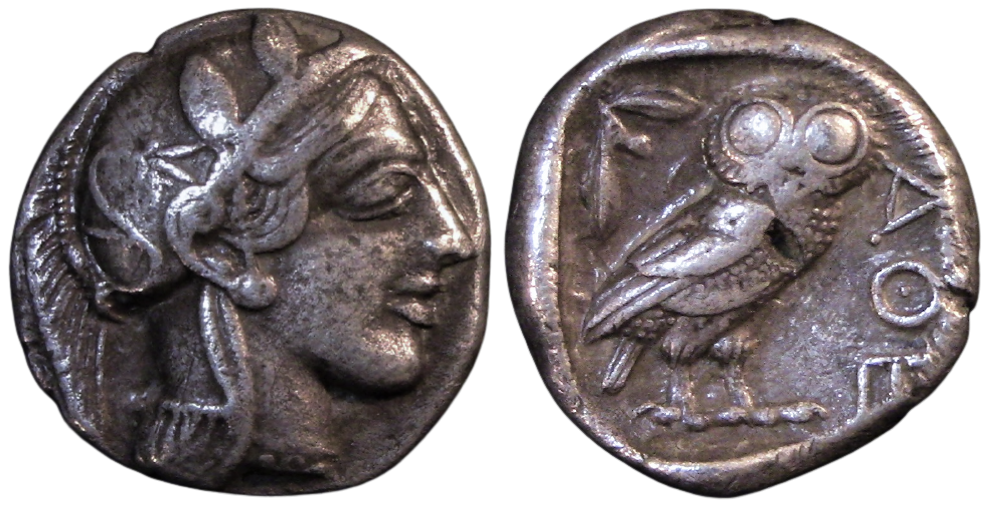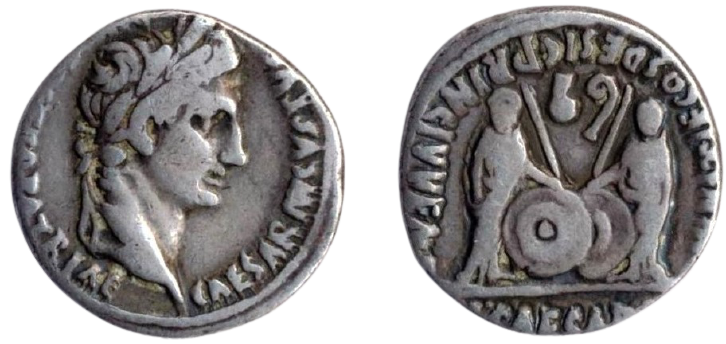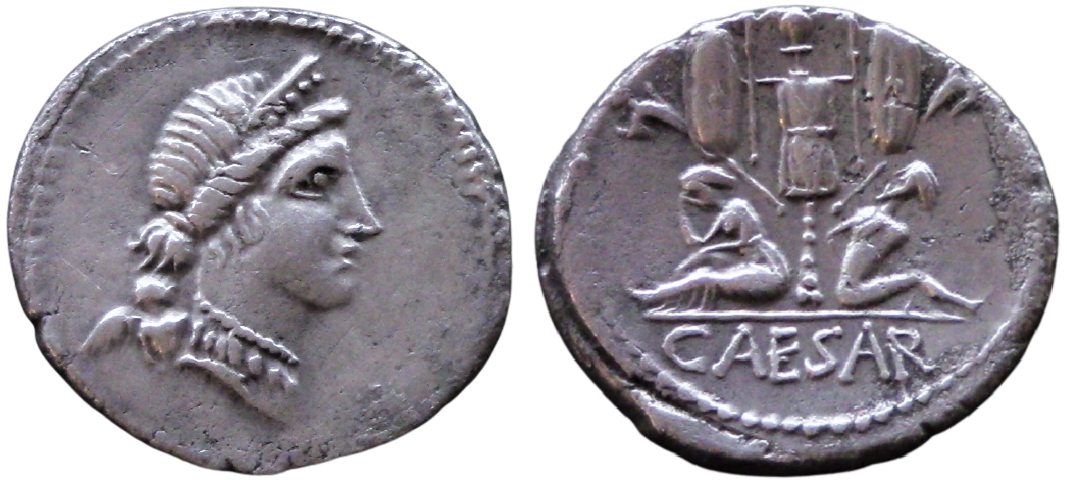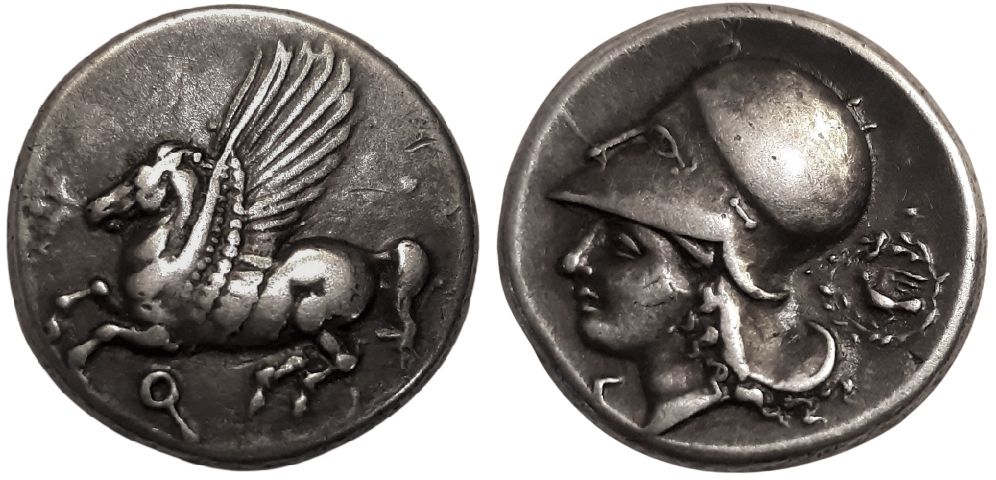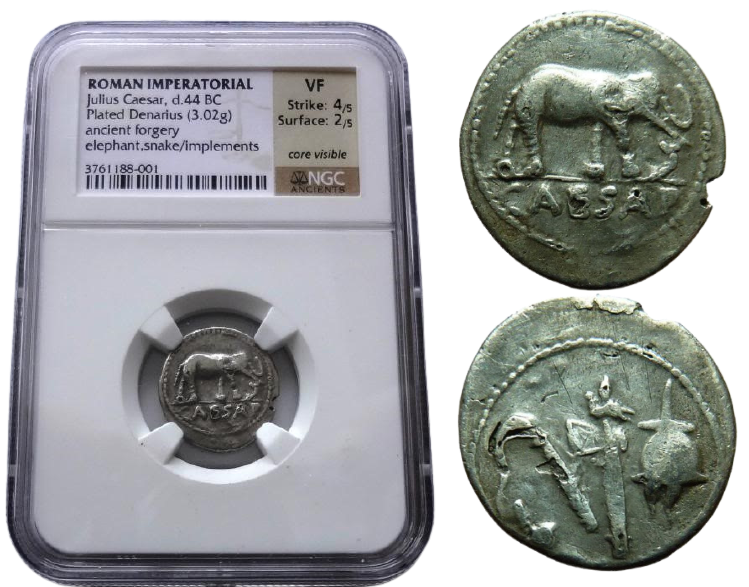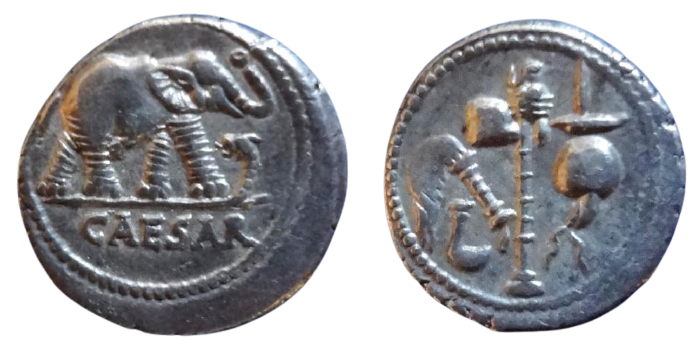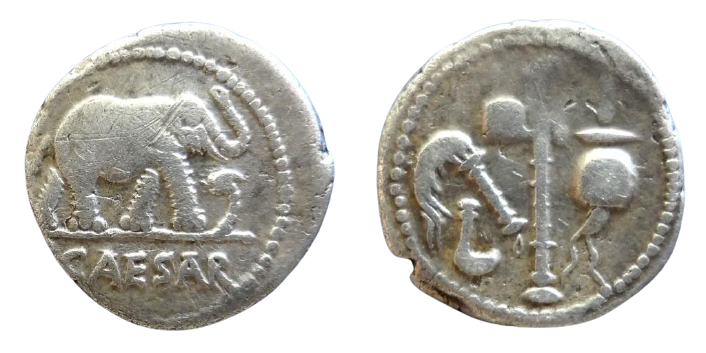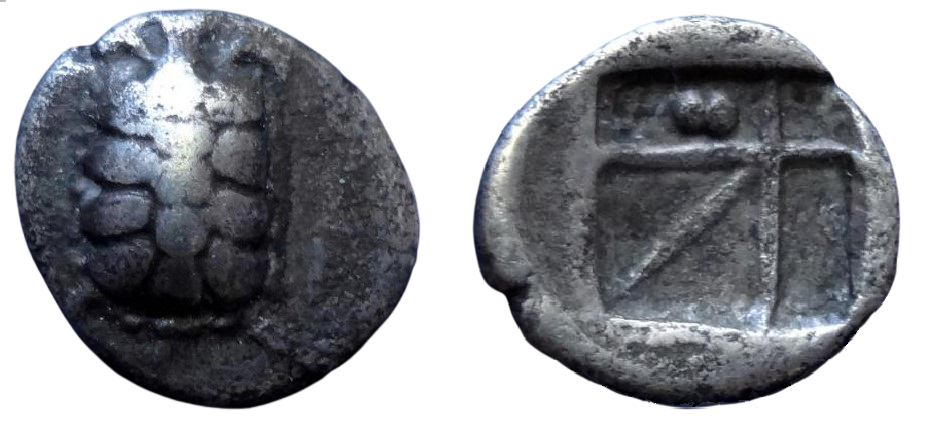
Purchased from Colosseum Coin Exchange Mail Bid Sale No. 59, 22 Nov 1991. This coin was my first-ever auction purchase. (More: “Catalog Collection Favorites” page.)
Attica, Aegina (Saronic Gulf Islands) AR Drachm (5.0g, 19.5mm). Circa 404-375 BCE.
Obverse: Testudo Graeca, tortoise (or “land turtle”) with segmented shell containing 13 plates.
Reverse: Large incuse square with two pellets in one of five-compartment skew pattern.
References: SNG Cop 520; Millbank Pl II, 16 (Period V; 404 – 375 BC)
Provenance: Ex-Colosseum Coin Exchange (Ira Teitelbaum, Hazlet NJ), MBS 59 (22 Nov 1991), Lot 2.
Notes: See also earlier archaic style Sea Turle stater.
Located in the Saronic Gulf between Attica and the Peloponnese, Aegina held a strong commercial position in maritime trade, making it a site of competition with neighbors (most famously Athens).
Aegina is thought to have been the first European mint to introduce coinage to “the West,” c. early 6th cent. BCE. According to Ephorus of Kyme it was established by Pheidon of Argos c. 650, though modern historians have claimed the date was probably no earlier than 550 (Milbank 1924; see also Numiswiki, Turtles).
Aegina’s ~12.2g stater was widely adopted as monetary standard (~6.1g for the drachm, 1g obol). The sea turtle style stater was struck until either the end of the Peloponnesian War in 404 (Milbank 1924) or Athens’ military victory over Aegina around 457 (Kraay 1976), after which the design switched to the land tortoise. (The tortoise had also appeared on an earlier electrum stater).
The exact reason is a matter of some speculation. Milbank’s 1924 conclusion still holds: “No plausible explanation has as yet been put forward for this change from the sea-tortoise to a land turtle.” Maybe it was a show of gratitude and honorary tribute to a military ally to whom the land tortoise was sacred (perhaps Sparta or Thyreatis [Milbank 1924]). Perhaps the design was switched after being conquered by Athens, reflecting Aegina’s loss of their proud navy and maritime privileges (Kraay 1976). Neither theory has achieved a decisive level of evidence.
Categories: Greek Coins
Tags:

